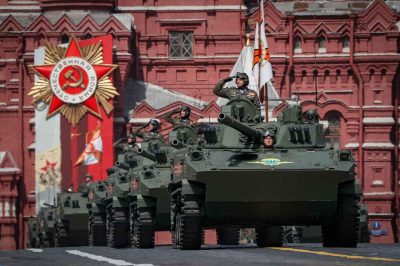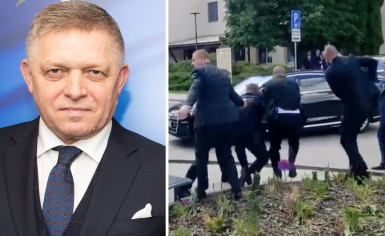“Attempted Military Coup” in South Korea
by Konstantin Asmolov, New Eastern Outlook:
 At the beginning of July 2018, South Korea’s mainstream newspapers were full of headlines about an uncovered military coup as deviously planned as the military plots concocted by Park Chung-hee and Chun Doo-hwan. A whole group of high ranking military personnel, including Kim Kwang-jin, the Chief of The National Security Office; So Gang-won, the deputy Chief of the Defense Security Command; Han Min-goo, the Minister of National Defense; Cho Hyun-chun, the Defense Security Command (DSC) Chief, and Chief of Army Staff Chan Jun-gu was prepared to declare a national state of emergency and deploy tanks, special forces and paratroopers in the streets to suppress ongoing protests and avoid a repeated attempt to remove Park Geun-hye from power, who was most likely aware of the plot and planned to execute people.
At the beginning of July 2018, South Korea’s mainstream newspapers were full of headlines about an uncovered military coup as deviously planned as the military plots concocted by Park Chung-hee and Chun Doo-hwan. A whole group of high ranking military personnel, including Kim Kwang-jin, the Chief of The National Security Office; So Gang-won, the deputy Chief of the Defense Security Command; Han Min-goo, the Minister of National Defense; Cho Hyun-chun, the Defense Security Command (DSC) Chief, and Chief of Army Staff Chan Jun-gu was prepared to declare a national state of emergency and deploy tanks, special forces and paratroopers in the streets to suppress ongoing protests and avoid a repeated attempt to remove Park Geun-hye from power, who was most likely aware of the plot and planned to execute people.
The information source that led to the media frenzy was the Military Human Rights Center for Korea (MHRCK). Still, if one looks beyond the headlines, a lot more is revealed.
The first news items on this topic appeared as far back as 9 March but went completely unnoticed. Based on statements by several informants, MHRCK stated that while the National Assembly of South Korea was in the process of approving the legislation to impeach the ex-President, Park Geun-hye in response to mass protests that had taken place on 9 December 2016, South Korea’s military command, on more than one occasion, discussed deploying the army.
These plans stemmed from the need to enforce the Presidential decree, approved in 1950 and aimed at protecting certain districts in emergency situations, on deploying the army to a particular district, and ensuring security and civil order there. MHRCK also added that South Korea’s Joint Chiefs of Staff presented a report to the Ministry of National Defense on the need to abolish this decree as it violates basic human rights, but the Minister of National Defense at the time, Han Min-goo, failed to cancel the decree and ordered a review into the possibility of preserving it instead.
This caused a moderate scandal, the new National Defense Minister ordered an investigation, which later revealed that no discussions among the Joint Chiefs of Staff had taken place on the issue of deploying armed forces, while the Ministry of National Defense had looked into the possibility of cancelling the decree or introducing some changes to it, and not abolishing it.
In recent months several important events, worth understanding, have happened. First of all, we could say that Moon Jae-in has finally dealt with his enemies in his security services. The high point arrived when the Supreme Court of Korea finally reached a decision in the 5-year trial concerned with the interference in the 2012 Presidential elections by the security forces. And as a result, the former Director of the National Intelligence Service, Won Sei-hoon, was sentenced to 4 years in prison. Two of Won’s aids, the former head of and the deputy head of the psychological warfare team, each received conditional sentences of 2.5 years.
It is worth reminding the readers that Won, Lee Myung-bak’s notorious stooge and the main culprit in the “trolling officials” case, had been sentenced to 2.5 years prison as far back as 2014 during the presidency of Park Geun-hye, who clearly did not appreciate the security forces’ attempts to break the law on its impartiality. In 2015, the verdict was reviewed and the sentence increased to 3-years. In 2017, during Moon’s presidential term, the case was reviewed yet again in light of new developments, and the length of imprisonment extended to 4 years. After that, Moon turned his complete attention to the Defense Security Command and the military, by appointing Song Young-moo as the Minister of National Defense (with roots in the Navy and not the Army) and initiating military reform, which will involve making 100 generals (90 of them representing ground forces) redundant.
Secondly, soon after the inter-Korea summit, a group of renowned hardcore conservatives announced the creation of a commission to save the South Korean homeland, openly accusing Moon of ruining the country with the view of handing him over to the communists. There was talk that armed forces had plenty of supporters of this viewpoint.
Thirdly, in the past weeks, Moon’s ratings have been decreasing. The situation is not critical, but the changes have continued for a third week in a row during a time when several state economic initiatives were launched, but that are, in author’s opinion, not sufficiently thought through and risky. The President’s relationships with labor unions have worsened, and although he replaced economic advisors the prospects still looked grim.
Luckily, on 6 July news about the latest twist in the scandal, originating from MHRCK yet again, began to appear, and the timing could not be more perfect. An inspection at the Defense Security Command (DSC) brought a document, dubbed The Plan to Introduce Martial Law and Joint Functions to light. It had been prepared by the DSC at the initiative of the Security Advisor, Kim Kwang-jin, and passed along to the Presidential Administration. Based on the descriptions of the document published in the media, if the Constitutional Court of Korea had stopped Park Geun-hye’s impeachment proceedings, the plan would have been to first introduce a curfew in the country, and if the situation had worsened, a national state of emergency would have been declared.
The plan included the number of armed forces set for deployment, their equipment, deployment rules and other details. For instance, 200 tanks, 500 armored vehicles, 4,800 infantrymen and 1,400-strong special forces units were meant to be deployed in Seoul. They would have been tasked with protecting and taking responsibility over the Presidential Administration, the National Defense Ministry, the National Assembly, Seoul’s mayoralty, the Constitutional Court and Gwanghwamun Square, the epicenter of the protests. Obviously, the plan was to avoid engaging locally based armed forces in order to avoid problems with soldiers seeing their acquaintances and relatives “on the other side of the barricades”.
Then, the media sources under Moon’s sway started publishing hysterical pieces claiming that conservatives in the armed forces were planning a coup. Apparently, the leaders of the junta had understood that their ideas would not have received supported from everyone. Hence, the Navy, the Airforce, the General Command and the ROK-US Combined Forces Command were not to take part in introducing martial law. The situation was supposed to be controlled by the Army Command (although, according to law, the General Command Chief was meant to be in charge), which, unlike the Navy and the Airforce, lends its support to conservatives. The plan (expounded, for the most part, by anonymous informers at MHRCK) was to take over the administrative and legislative state bodies and to place officers with the right views in charge. Obviously, it is highly likely that Park Geun-hye had been aware of these plans.
And unmistakable parallels could be drawn between the military coup staged in 1979, which brought the head of the Security Command Chun Doo-hwan to power, and the plot in question. Still your humble author has quite a number of unanswered questions.
First of all, the media has been publishing infographics instead of actual coup plans, and the author would, thus, like to know if there were any irregularities connected to the document discovery similar to those noted in the case of the tablet PC with evidence against Choi Soon-sil, or the case of wiretaps at secret meetings of the Unified Progressive Party. In other words, the author would like to know if the original coup plans have been suitably edited by Moon’s supporters. It is no coincidence that a number of experts have noted that whenever MHRCK receives a report from a DSC inspection, the event has either all the signs of “democracy’s free reign” or of material being, in fact, introduced by the government.



